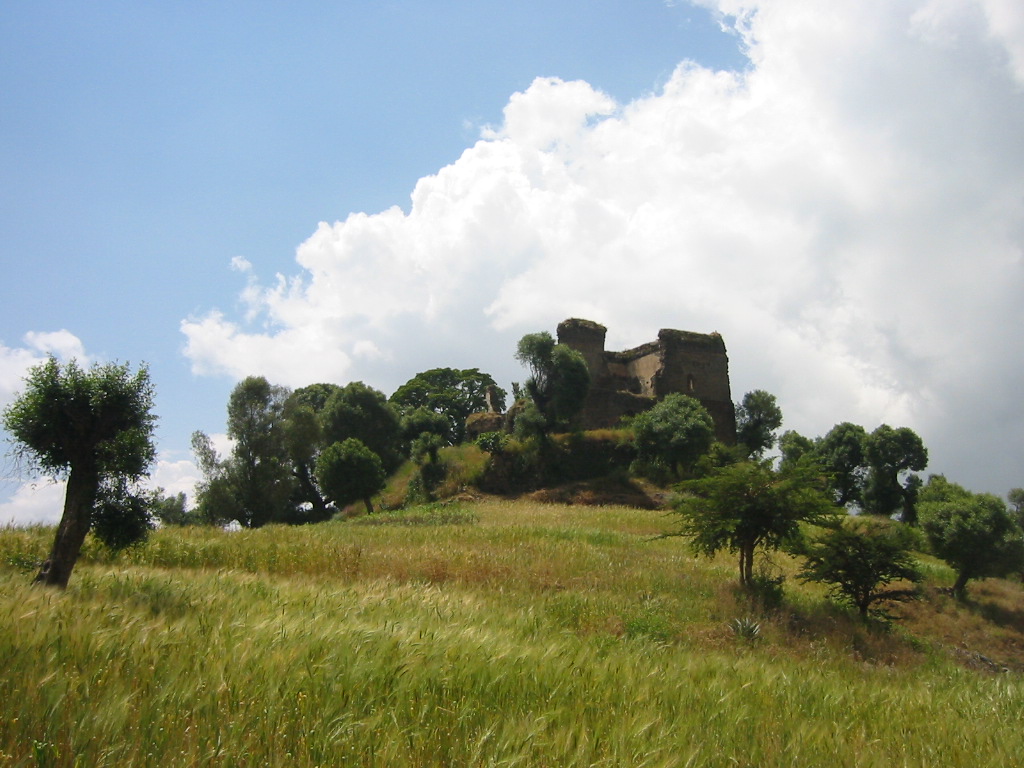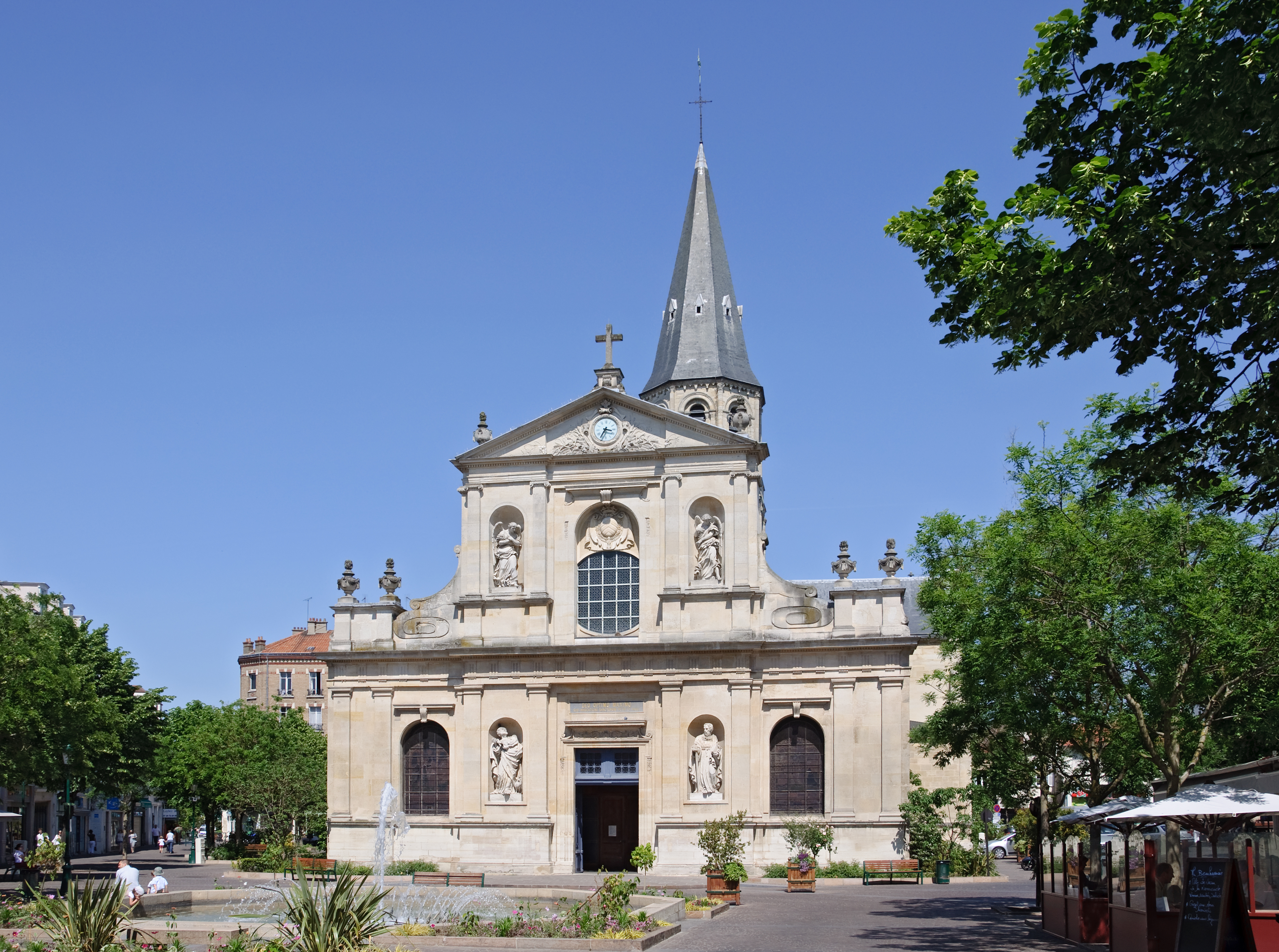|
Yaqob
Yaqob I ( gez, ያዕቆብ; c. 1590 – 10 March 1607), throne name Malak Sagad II (Ge'ez: መለክ ሰገድ), was Emperor of Ethiopia from 1597 to 1607, and a member of the Solomonic dynasty. He was the eldest surviving son of Sarsa Dengel. According to E. A. Wallis Budge, Yaqob's mother was Empress Maryam Sena; others sources suggest she was Emebet Harego of the Beta Israel. Because Yaqob had at least three sons before his death, it is likely he was born no later than 1590. Most Ethiopian sources including Tekle Tsadik Mekuria however state that his mother was Harego, but that Empress Maryam Sena championed his right to the throne as she only bore Emperor Sarsa Dengel daughters, and hoped to dominate a long term regency for the boy monarch. Life Sarsa Dengel had intended to make his nephew Za Dengel his successor, but under the influence of his wife Maryam Sena and a number of his sons-in-law, he instead chose Yaqob, who was seven when he came to the throne, with '' Ras'' ... [...More Info...] [...Related Items...] OR: [Wikipedia] [Google] [Baidu] |
Susenyos I
Susenyos I ( gez, ሱስንዮስ ; circa 1571-1575 – 17 September 1632), also known as Susenyos the Catholic, was Emperor of Ethiopia from 1606 to 1632, and a member of the Solomonic dynasty. His throne names were Seltan Sagad and Malak Sagad III. He was the son of ''Abeto'' Fasil, as well as the grandson of ''Abeto'' Yakob and the great-grandson of Dawit II. As a result, while some authorities list Susenyos as a member of the Solomonic dynasty, others consider him—rather than his son, Fasilides—as the founder of the Gondar line of the dynasty (which is, however, ultimately a subset of the Solomonic dynasty). The life of Susenyos is known through his chronicle, written by several official writers (''sehafe te’ezaz''). The Jesuits, who were closely associated with Susenyos’s reign, also left numerous documents on their mission in Ethiopia. Manuel de Almeida, a Portuguese Jesuit who lived in Ethiopia during Susenyos' reign, described the emperor as tall with the f ... [...More Info...] [...Related Items...] OR: [Wikipedia] [Google] [Baidu] |
Za Dengel
Za Dengel ( Ge'ez: ዘድንግል; died 24 October 1604), throne name Atsnaf Sagad II (Ge'ez: አጽናፍ ሰገድ) was Emperor of Ethiopia from 1603 until his death in 1604, and a member of the Solomonic dynasty. Ancestry Of Amhara lineage, Za dengel was the son of Lesana Krestos; brother of Emperor Sarsa Dengel. Reign Za Dengel may have been married to ''Woizero'' Wangelawit, eldest daughter of his second cousin Susenyos (later emperor) and lady Wolde Saala of Walaqa and Marabete (later Empress Sultan Mogassa). Sarsa Dengel had intended to make his nephew as his heir, recognizing that to avert the civil war that would likely follow his death an adult would be needed, and the emperor's own sons were quite young. These plans were changed primarily through the influence of Empress Sena Maryam, stepmother of Emperor's eldest surviving son Prince Yaqob, who was made emperor in 1597. The empress had Za Dengel seized and confined in a religious retreat on the island of Dek i ... [...More Info...] [...Related Items...] OR: [Wikipedia] [Google] [Baidu] |
Zaga Christ
Zaga Christ ( – April 22, 1638), also referred to as Ṣägga Krəstos, Atənatewos, and Lessana Krəstos, was a seventeenth-century Ethiopian man who, after having been imprisoned, claimed to be the son of Emperor Yaˁəqob I of Ethiopia. Zaga Christ travelled extensively, living in Sudan, Egypt, Palestine, Greece, and later Italy. There he met the Pope and fell in love with the franciscan nun Caterina Massimi, who he corresponded with from the years of 1633 to 1637 with letters of love written in their own blood. Zaga Christ died the following year of pleurisy while in France, where the letters were later discovered. Accounts of his story There are many accounts of his life story. The French Franciscan friar Eugène Roger met Zaga Christ in Nazareth (then part of Ottoman Empire) and was familiar with his whereabouts from there until his death. Rèchac's accounts came from an Italian manuscript, written by Zaga Christ himself when he was living in Rome. The Catholic Pat ... [...More Info...] [...Related Items...] OR: [Wikipedia] [Google] [Baidu] |
Sarsa Dengel
Sarsa Dengel ( gez, ሠርጸ ድንግል ; 1550 – 4 October 1597), also known as Sarsa the Great, was Emperor of Ethiopia, and a member of the Solomonic dynasty. His throne name was throne name Malak Sagad I (መለክ ሰገድ ). Biography The son of Emperor Menas and Empress Admas Mogasa, and thus hailing from the Amhara people, Sarsa Dengel was elected king by the Shewan commanders of the army and the Dowager Empress. He was barely fourteen years old, but was supported by the Amhara aristocracy who feared Tigrayan influence in the person of Yishaq who frequently aligned with the Ottomans. Upon his coming of age, Sarsa Dengel had to put down a number of revolts: such as his cousin Hamalmal in 1563 at the Battle of Endagabatan, and another by his cousin Fasil two years later. Sarsa Dengel moved the center of the empire from Shewa to Begemder, especially around the Lake Tana area where he established his imperial residence and built many castles. War against the ... [...More Info...] [...Related Items...] OR: [Wikipedia] [Google] [Baidu] |
Emperor Of Ethiopia
The emperor of Ethiopia ( gez, ንጉሠ ነገሥት, nəgusä nägäst, " King of Kings"), also known as the Atse ( am, ዐፄ, "emperor"), was the hereditary ruler of the Ethiopian Empire, from at least the 13th century until the abolition of the monarchy in 1975. The emperor was the head of state and head of government, with ultimate executive, judicial and legislative power in that country. A '' National Geographic'' article from 1965 called imperial Ethiopia "nominally a constitutional monarchy; in fact t wasa benevolent autocracy". Title and style The title " King of Kings", often rendered imprecisely in English as "emperor", dates back to ancient Mesopotamia, but was used in Axum by King Sembrouthes (c. 250 AD). However, Yuri Kobishchanov dates this usage to the period following the Persian victory over the Romans in 296–297. The most notable pre-Solomonic usage of the title "Negusa Nagast" was by Ezana of Axum; despite this, prior to the beginning of the ... [...More Info...] [...Related Items...] OR: [Wikipedia] [Google] [Baidu] |
Solomonic Dynasty
The Solomonic dynasty, also known as the House of Solomon, was the ruling dynasty of the Ethiopian Empire formed in the thirteenth century. Its members claim lineal descent from the biblical King Solomon and the Queen of Sheba. Tradition asserts that the queen gave birth to Menelik I after her Biblically described visit to Solomon in Jerusalem. In 1270, the Zagwe dynasty was overthrown by Yekuno Amlak, who claimed descent from Solomon and founded the Solomonic era of Ethiopia. The dynasty lasted until 1974, ended by a coup d'état and the deposition of Haile Selassie, who was a Solomonic prince through his grandmother. History The Solomonic dynasty, a bastion of Ethiopian Orthodox Christianity, came to rule Ethiopia on 10 Nehasé 1262 EC (10 August 1270 CE) when Yekuno Amlak overthrew the last ruler of the Zagwe dynasty at the Battle of Ansata. Yekuno Amlak claimed direct male line descent from the old Axumite royal house that the Zagwes had replaced on the throne. M ... [...More Info...] [...Related Items...] OR: [Wikipedia] [Google] [Baidu] |
Rabat I
Rabat I (1616/7 - 1644/5) was a ruler of the Kingdom of Sennar. According to James Bruce, he was the son of Badi I. He intrigued in Ethiopian politics a number of times. Early in his reign he detained the Coptic bishop Abba Yeshaq, who had passed through Sennar on his way to Ethiopia.Richard Pankhurst, ''The Ethiopian Borderlands'' (Lawrenceville: Red Sea Press, 1997), p. 369. Pankhurst refers to him as "Erubat". A later act was his attempt to convert Saga Krestos, the son of Emperor Yaqob of Ethiopia, to Islam, which resulted in Saga Krestos' departure.E.A Wallis Budge. ''A History of Ethiopia: Nubia and Abyssinia'', 1928 (Oosterhout, the Netherlands: Anthropological Publications, 1970), p. 373. In response to a slave raid by Emperor Susenyos of Ethiopia Susenyos I ( gez, ሱስንዮስ ; circa 1571-1575 – 17 September 1632), also known as Susenyos the Catholic, was Emperor of Ethiopia from 1606 to 1632, and a member of the Solomonic dynasty. His throne names were Seltan ... [...More Info...] [...Related Items...] OR: [Wikipedia] [Google] [Baidu] |
Lake Tana
Lake Tana ( am, ጣና ሐይቅ, T’ana ḥāyik’i; previously Tsana) is the largest lake in Ethiopia and the source of the Blue Nile. Located in Amhara Region in the north-western Ethiopian Highlands, the lake is approximately long and wide, with a maximum depth of , and an elevation of . Lake Tana is fed by the Gilgel Abay, Reb and Gumara rivers. Its surface area ranges from , depending on season and rainfall. The lake level has been regulated since the construction of the control weir where the lake discharges into the Blue Nile. This controls the flow to the Blue Nile Falls (Tis Abbai) and hydro-power station. In 2015, the Lake Tana region was nominated as a UNESCO Biosphere Reserve recognizing its national and international natural and cultural importance. Overview Lake Tana was formed by volcanic activity, blocking the course of inflowing rivers in the early Pleistocene epoch, about 5 million years ago. The lake was originally much larger than it is today. ... [...More Info...] [...Related Items...] OR: [Wikipedia] [Google] [Baidu] |
Thomas Pakenham (historian)
Thomas Francis Dermot Pakenham, 8th Earl of Longford (born 14 August 1933), known simply as Thomas Pakenham, is an Anglo-Irish historian and arborist who has written several prize-winning books on the diverse subjects of African history, Victorian and post-Victorian British history, and trees. Background Pakenham is the eldest son of the 7th Earl of Longford, a Labour government minister, and the author Elizabeth Longford.''Burke's Peerage'', vol. 2 (2003), p. 2395. He has seven siblings, among them the award-winning historian and biographer Lady Antonia Fraser (who is the widow of playwright Harold Pinter); Lady Rachel Billington, also a writer (and the widow of the director Kevin Billington); Lady Judith Kazantzis, a poet; and The Hon. Kevin Pakenham, who worked in the City of London. He is also a cousin of the former Labour deputy leader Harriet Harman. Thomas Pakenham does not use his title of Earl of Longford and before succeeding his father did not use his courtesy tit ... [...More Info...] [...Related Items...] OR: [Wikipedia] [Google] [Baidu] |
Rueil-Malmaison
Rueil-Malmaison () is a commune in the western suburbs of Paris, in the Hauts-de-Seine department, Île-de-France region. It is located from the centre of Paris. In 2017, it had a population of 78,152. It is one of the wealthiest suburbs of Paris. Name Rueil-Malmaison was originally called simply Rueil. In medieval times the name Rueil was spelled either , , , , or . This name is made of the Celtic word (meaning 'clearing, glade' or 'place of') suffixed to a radical meaning 'brook, stream' ( la, rivus, fro, rû), or maybe to a radical meaning ' ford' (Celtic ). In 1928, the name of the commune officially became Rueil-Malmaison in reference to its most famous tourist attraction, the Château de Malmaison, home of Napoleon's first wife Joséphine de Beauharnais. The name Malmaison comes from Medieval Latin , meaning 'ill-fated domain', 'estate of ill luck'. In the Early Middle Ages Malmaison was the site of a royal residence which was destroyed by the Vikings in 846. Hi ... [...More Info...] [...Related Items...] OR: [Wikipedia] [Google] [Baidu] |
Pleurisy
Pleurisy, also known as pleuritis, is inflammation of the membranes that surround the lungs and line the chest cavity ( pleurae). This can result in a sharp chest pain while breathing. Occasionally the pain may be a constant dull ache. Other symptoms may include shortness of breath, cough, fever, or weight loss, depending on the underlying cause. The most common cause is a viral infection. Other causes include bacterial infection, pneumonia, pulmonary embolism, autoimmune disorders, lung cancer, following heart surgery, pancreatitis and asbestosis. Occasionally the cause remains unknown. The underlying mechanism involves the rubbing together of the pleurae instead of smooth gliding. Other conditions that can produce similar symptoms include pericarditis, heart attack, cholecystitis, pulmonary embolism, and pneumothorax. Diagnostic testing may include a chest X-ray, electrocardiogram (ECG), and blood tests. Treatment depends on the underlying cause. Paracetamol (acetamin ... [...More Info...] [...Related Items...] OR: [Wikipedia] [Google] [Baidu] |
Cardinal Richelieu
Armand Jean du Plessis, Duke of Richelieu (; 9 September 1585 – 4 December 1642), known as Cardinal Richelieu, was a French clergyman and statesman. He was also known as ''l'Éminence rouge'', or "the Red Eminence", a term derived from the title "Eminence" applied to cardinals and the red robes that they customarily wear. Consecrated a bishop in 1607, Richelieu was appointed Foreign Secretary in 1616. He continued to rise through the hierarchy of both the Catholic Church and the French government by becoming a cardinal in 1622 and chief minister to King Louis XIII of France in 1624. He retained that office until his death in 1642, when he was succeeded by Cardinal Mazarin, whose career he had fostered. He also became engaged in a bitter dispute with the king's mother, Marie de Médicis, who had once been a close ally. Richelieu sought to consolidate royal power and restrained the power of the nobility in order to transform France into a strong centralized state. In f ... [...More Info...] [...Related Items...] OR: [Wikipedia] [Google] [Baidu] |







